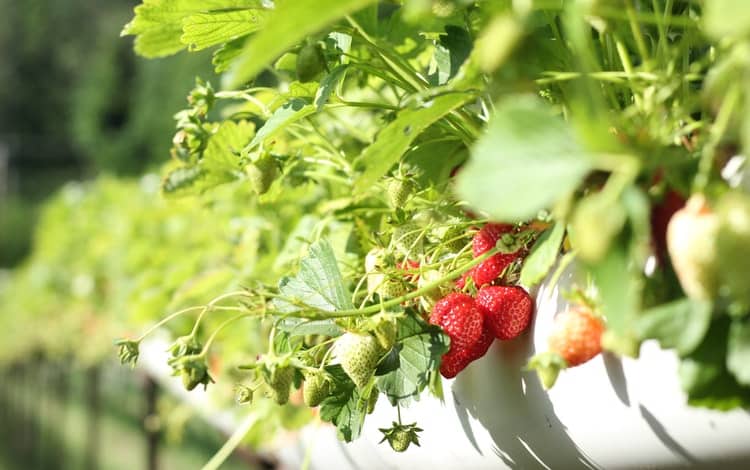Can you plant strawberries in the fall? This is one of the various questions I often get from Gardening Bank readers. And in this post, we’ll address this question to the best of our knowledge.
Planting strawberries in the fall makes lots of sense. However, most home gardeners get carried away by their gardens toward the end of the winter months. As a result, they fail to plan ahead to plant berries during the autumn months of the previous year.
You can plant strawberries in the fall so you can reap a healthy harvest of berries during the gardening season the next spring/summer.
Let's now answer the question in detail:
Can You Plant Strawberries in the fall?
Planting strawberries in the fall is a good idea. In fact, most commercial strawberry farms almost solely plant strawberry plants during the fall months after the previous year’s harvest.
If you plant in the spring, it’ll need much more care and more time will pass from the time you plant the strawberry until a full harvest is reaped.
But if you’re able to plant a strawberry bed in the early fall months, the plants will fully establish themselves and their root system before going dormant for the winter.
Then, as the temperatures increase in the early spring or late winter months, a fully-rooted and more mature strawberry plant starts to put forth new foliage and flower stalks.
Furthermore, instead of pinching off the strawberry flowers to allow the roots to establish, the already-established roots will pull nutrients and water from the soil to sustain the growing strawberries.
With this, you’ll have a healthy harvest during the first growing season of the plant instead of the second. Moreover, most mail-order nurseries out there will ship strawberry plugs with complete roots for fall planting.
This will enable the plants to establish faster than bare-root plants and helps reduce the number of plants that die. Hopefully, those strawberry gardeners with an inclination toward planning will realize the benefits of planting fall strawberry plants.
Disadvantages of Planting Strawberries in the Fall
The major disadvantage of planting strawberries in the fall is that most times, plants are not usually available then. However, many nurseries have started to dig strawberry plants in the spring after which they're stored dormant through the summer months in a carefully controlled refrigerated storage.
This helps to fill orders in the fall. So this problem is no longer as it used to be. Incidentally, commercial growers now prefer the dormant plants due to the fact that they make better runners than plants transplanted before they go dormant.
The latter type has a tendency to make multiple crowns rather than runners. This point makes little difference to the home gardener who grows his strawberries in hills instead of matted rows.
Another drawback to fall strawberry planting is that to get a healthy crop the first spring, you may be required to put in more plants than would generally be used in spring planting. A third disadvantage is a necessity for the heavy fall mulch.
If you want to plant strawberries in the fall, it’s advisable to order strawberry “tips” or “plugs” ahead of time. Planting in the spring months is the best because you’ll have more choice of varieties.
Strawberry tips are cheaper though, I usually go for the rooted plugs because they’re more reliable and easy to plant. You can request a shipping date early in September (the first week is better) and plant the plugs as soon as they arrive.
Before planting, the first step is to prepare the soil. Plants new strawberries where the plant not have grown for at least 3-years. Ensure that you don’t plant strawberries following potatoes or tomatoes, as they might pick up Verticillium wilt.
Conclusion
Regardless of when you choose to plant your strawberries, some general rules apply all the time. You need to prepare slightly acidic, well-drained soil for your berry plants and set them 12 inches apart from each other and at a depth that lets crown leaves be just above the soil.
For the best fruiting, at least 8-hours per day of direct sunlight is recommended, but the plants will equally bloom in a light shade provided the temperature is between 60 and 80 degrees Fahrenheit.
Finally, watering is very important. Strawberries have shallow roots and require soil that is always moist but never wet.






Leave a Reply